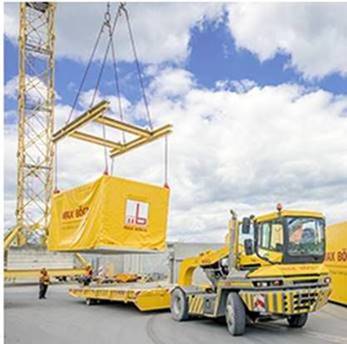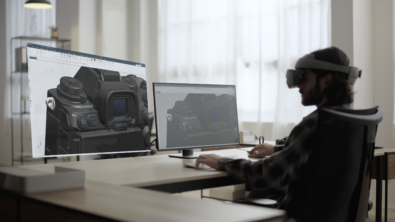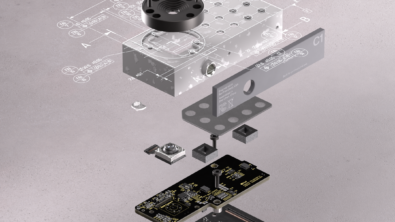What is modular construction?

In the third and final episode of a three-part series on technology in the architecture, engineering, and construction (AEC) and building information modeling (BIM) industry, our host Jennifer Piper talks to Derek England, the NX Product Manager for AEC and BIM at Siemens Digital Industries Software, about how modular construction is changing the construction industry.
In the first episode, Derek and Jen discuss trends and technology in AEC and BIM. In the second episode, Derek talks about how to improve the design review process. In this episode of the Next Generation Design podcast, you’ll learn the factors that have led to the rise of modular construction. You’ll also learn about the two types of modular construction and the benefits of each. Lastly, you’ll hear about the benefits of using the digital twin in the building design process and how to use NX for modular construction.
Listen to or read the full episode: The Benefits of Modular Construction
What You’ll Learn in this Episode:
What does “modular construction” mean
Modular design is a popular topic in the construction industry. Modular design and modular construction is made up prefabricated buildings– buildings that are constructed offsite in a factory. Modular design uses the same materials, building codes, permits, etc. as traditional construction, but they are built offsite and then transported to be built similar to LEGOS or IKEA furniture by connecting them together. A panelized modular building has all the pieces and panels packaged together and then you put it all together. It already has the outlets, plumbing, etc. Volumetric construction is where an entire room or part of a building is pre-built and then transported on-site.
Why modular construction is appealing to customers
The construction industry has a limited labor force. Skilled labor is hard to find, and for every two people retiring in the industry, only one may be entering. On top of that, weather and climate at a construction site can cause delays. Construction also disrupts communities where they are building through producing noise and light pollution in the area.
Problems solved by modular construction
Modular construction and buildings solve these issues. With modular construction, there is a construction line where one person will do the same job every day in their position on the line. It is a more attractive job, which helps with quality of life for construction workers. They can live close to the construction site as opposed to traveling around, they don’t have to worry about weather, and it’s a predictable job that does not require that the worker have multiple construction skills.
Not only does the quality of life increase for the workers, but the quality of the construction itself is also better. There is a controlled, indoor environment in which everything is built with perfect working conditions. The pieces are very durable and high quality as they must withstand transportation via trucks, ships, cranes, etc. Plus, it is faster since the build can begin before or as the site is prepared instead of having to wait until after.
How the digital twin helps modular construction
With modular construction, the digital twin can occur all in one building since design and construction can happen in one facility. In traditional construction, the change may be made on the physical version without ever letting the designer know, which can allow that problem to come up again in future designs. With modular construction, if an issue comes up on the factory floor, construction workers can go to the engineer and tell them that a change is needed immediately and it can be updated on the digital twin.
What a modular construction factory is like
Some modular construction factories can be very advanced and automated with robots and CNC machines, but some really are just a construction site that has been moved inside still with manual work. At Max Bögl’s modular construction factory, it looks just like a production line. There are multiple different modules that stay at 16 different stations for 60 minutes each. When the modules are complete, they are delivered and assembled at the construction site.
Max Bögl uses NX for their modular construction because it is a comprehensive tool. It allows them to do all the concrete, electrical, and plumbing on one software. Porsche Consulting said of the Max Bögl modular buildings, “The Max module concept is revolutionary. It combines standardization, individualization, and industrialization in a single product for construction sites at a uniquely high level of quality.”
Modular construction barriers
Though there are many pros to modular construction, it can be difficult to implement. It takes a lot of capital to have a facility for modular construction. Then, if someone wants to change the modules, tooling has to be done for the new design. It requires a lot of innovation to do new things in modular construction and figure out how to do them.
There are also issues with local regulations and inspections, as they change state-to-state. A construction company may want to build in one state but then needs to transport the modules to be delivered and assembled in another state. There, inspectors may want to deconstruct the parts to see if things like electrical and plumbing were done correctly, which is not easy to do. With 50 different states, there are 50 different regulations. Thus, modular construction is done most commonly where there is a big enough market to support it like California, Germany, or Nordic countries.
NX has commonly been used in automotive, transportation, aerospace, industries and OEMs. The parts that go into a house like door hinges or locks are likely to have been designed in NX. But, NX hasn’t always been used for designing the buildings these parts go into. Now, NX for BIM allows the AEC industry to use the digital twin and a comprehensive set of tools for building design. Learn more about NX for BIM with the Tips and Tricks series.
- BIM Navigator | NX Tips and Tricks
- Elevation Lines | NX Tips and Tricks
- BIM Structures and Rooms | NX Tips and Tricks
- BIM Reuse Library | NX Tips and Tricks
Connect with Derek on LinkedIn
Connect with Jennifer on LinkedIn
Continue listening to the Next Generation Design Podcast
Want to learn more about NX CAD software? Check out our website or try it for free.


